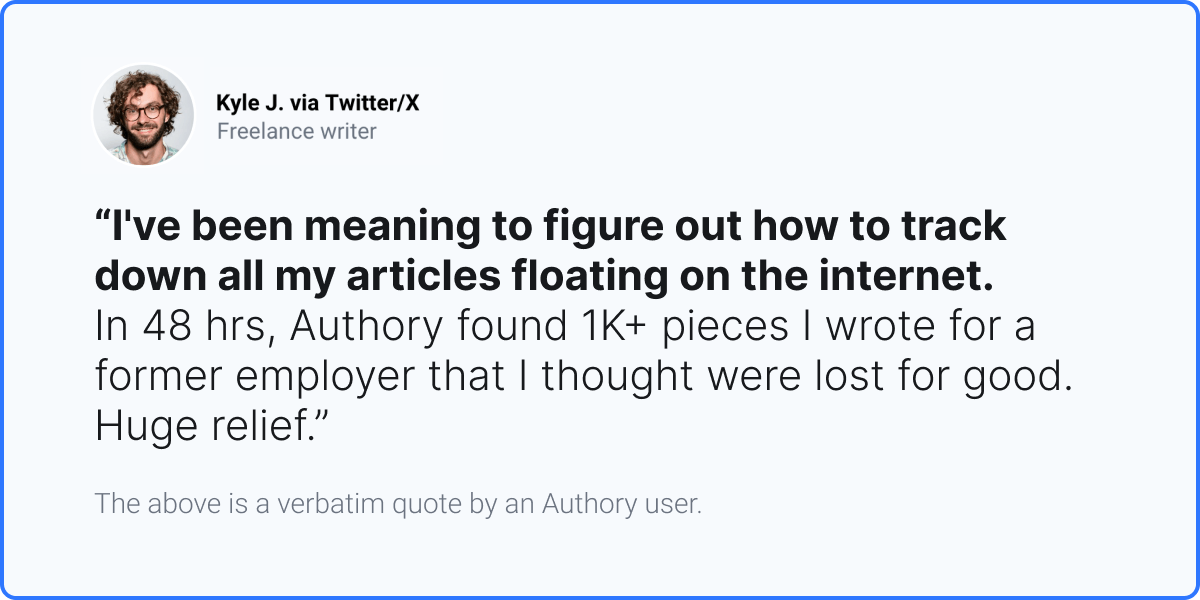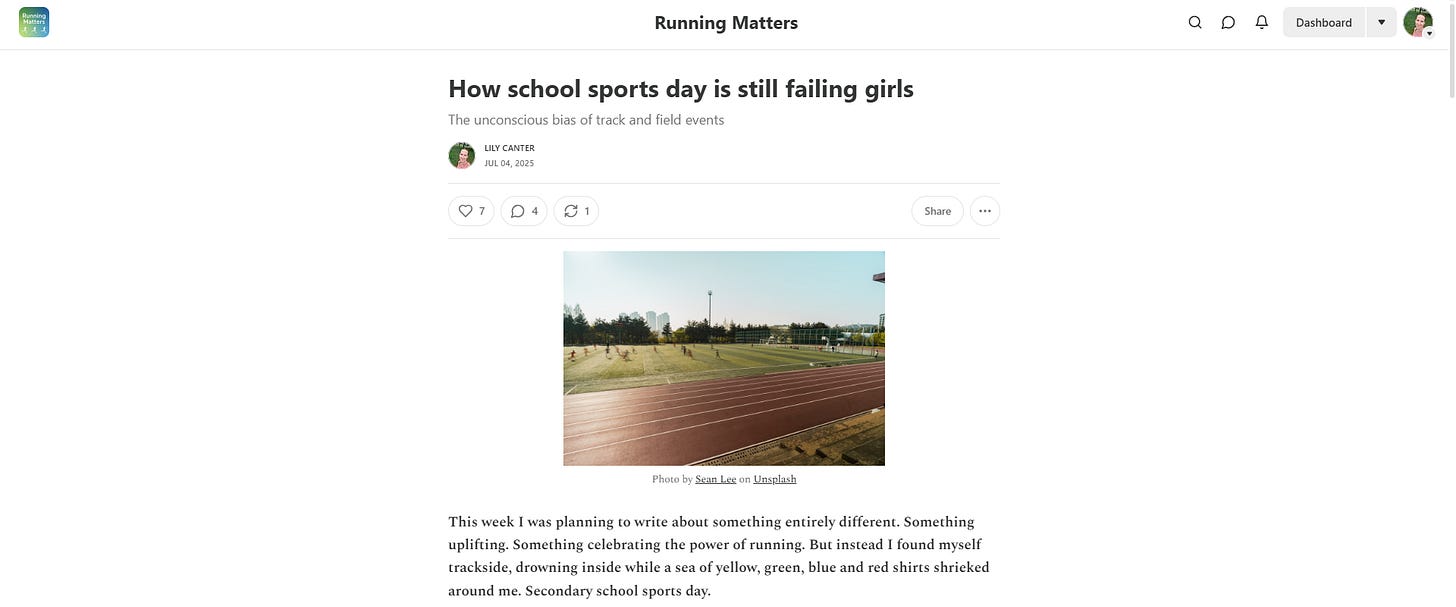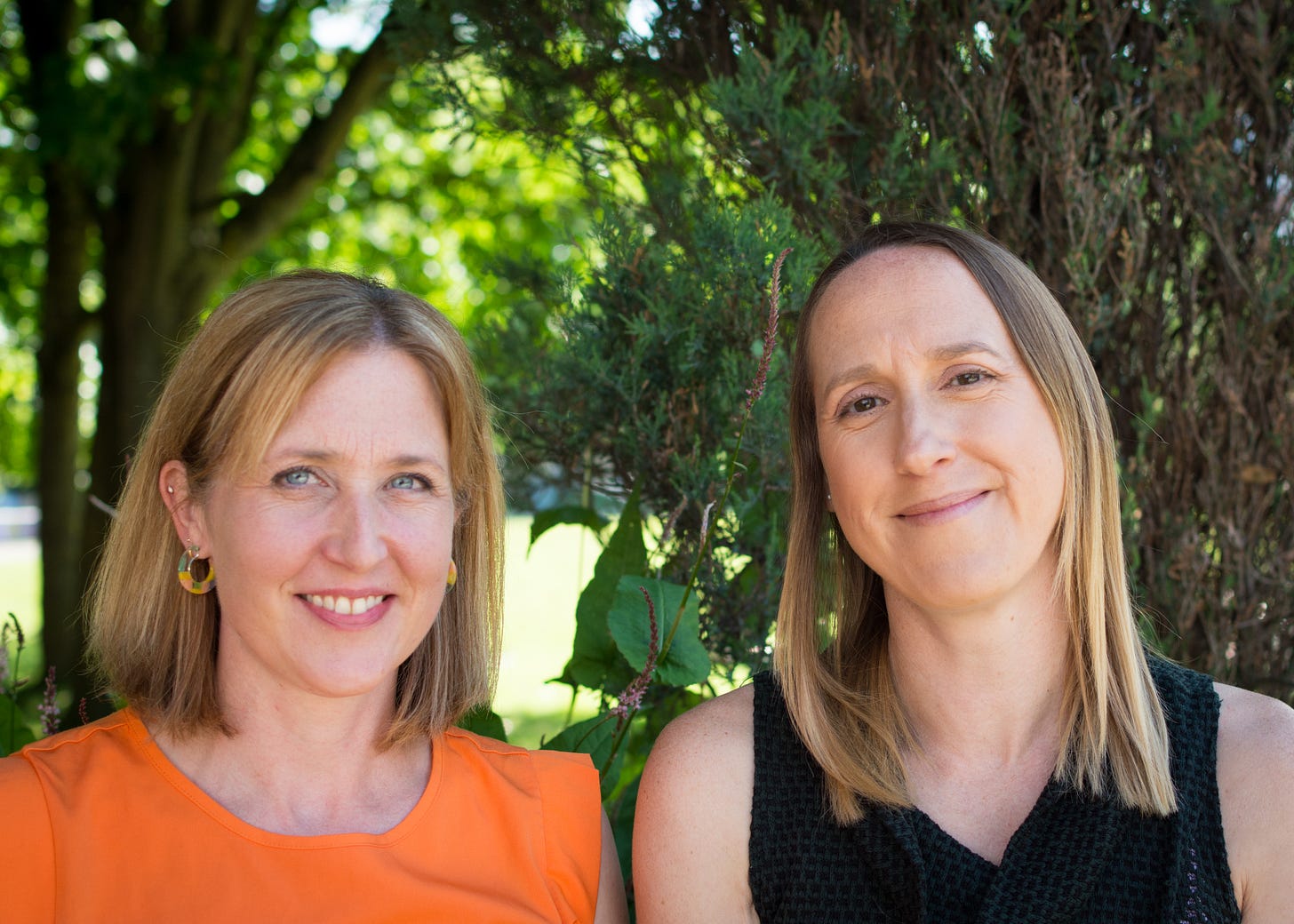What I’ve learnt about growing and monetising a Substack
Tips for financial success
Finally, a portfolio that’s always current and backed up
Tired of spending hours updating your portfolio or losing your work samples to site shutdowns?
Authory automatically creates a beautiful, self-updating portfolio page that showcases your work effortlessly and backs up everything you've ever published.
Keep your work samples safe, searchable, and ready to share at any time.
Join 1,000s of freelance writers, journalists and content marketers who already use Authory to impress potential clients and employers.
Get your free portfolio today. We also have a special offer for our FFJ community. Sign up via the link below to any paid plan for 20% off for the first year!

Over the past month, we’ve been running a special series on Substack - why certain newsletters are worth paying for, and how to make the most of it. We’ve spoken to writers who run paid-for Substacks, and journalists who’ve pivoted from a print magazine to an online newsletter.
To round off the series we are sharing our top lessons on monetising Substack and making it financially worthwhile in the longer term.
1. Build it… but don’t assume they’ll come
I’m a sucker for an adage so here’s one: if you build it, they will come. Unfortunately saturated online platforms don’t quite work like that anymore. But Substack does do a good job of recommending newsletters and surfacing you to new readers. With my own free Substack Running Matters, I’ve gained 137 subscribers through Substack’s app which is partly from using Notes (Substack’s social media tool) and via Recommendations from other authors. This is around 36% of my overall audience so it definitely makes a big difference.
The rest of my audience come via Instagram posts, LinkedIn posts and the odd few from Bluesky. I also occasionally post in running-related Facebook groups, where allowed.
By comparison the FFJ newsletter has grown just 9% of its audience directly from Substack. Most of our subscribers comes via our Facebook community as people opt-in to sign up to the newsletter when they join the group.
When starting a Substack think about how you are going to reach your audience. What is your social media strategy and how will you engage with potential readers?
2. Recommend others — carefully
Recommending other Substacks is a powerful tool. But it only works if you’re selective. I sometimes get requests from writers to recommend them in exchange for recommending me back, but unless their content is genuinely relevant and valuable to my readers, I say no. Think about your audience first.
3. Audience before income
You can only monetise Substack once you’ve built an audience. Putting up a paywall too early risks shutting out readers. The Movie Wingman tried this early on but later removed the paywall to focus on audience growth first. With Freelancing for Journalists, we ran the newsletter free for a year before finding a sponsor once we had around 2,000 subscribers.
4. Don’t overlook sponsorship
Sponsored posts are often underused on Substack. If you have a decent subscriber base - say, around 1,000 highly niche readers - sponsors will often pay. Even a small fee per post such as £50 can cover your time and build relationships for the future. When approaching potential sponsors make sure you give them your 30 day views rather than just your subscriber numbers.
I find that a lot of people read both this newsletter and my running one who are not subscribers. While I may only have 377 subscribers to Running Matters some posts attract 2,000 views in a month because people have seen the link and clicked on it to read it. These are all valuable statistics for advertisers.
5. Plan your tiers if you go paid
If you decide to offer premium content, be clear about what’s free and what’s paid. Some writers give a teaser to free subscribers, with the in-depth content behind the paywall. Others, like us at Freelancing for Journalists, provide one free and one paid newsletter. Extra research-heavy or exclusive content usually works best as premium, while more general advice can remain free.
6. Think beyond subscriptions
Monetisation doesn’t have to mean a paywall. You might use your newsletter to sell courses, books, guides or consultancy. Substack can be a platform for showcasing expertise as much as it is a publishing tool.
7. Ask your readers
Use polls and surveys to test the water. On Running Matters, I asked whether readers would be willing to pay. Only a small percentage said yes - but that was useful. It made me think harder about what extra content I’d offer, and whether sponsorship might be a better route for me.
8. Be patient
Growing and monetising Substack takes time. I’ve been running Running Matters for a year now, and I think it’ll take another year before I’m in a position to seriously add a paywall. The bigger your free audience, the more loyal they become, and the clearer the data about what content resonates. And even if only a small percentage are willing to pay, the bigger your audience, the larger the amount you can make from a small percentage.
9. Know your niche
Substack is full of newsletters on every possible subject. To stand out, you need a clear niche. In running, there are lots of newsletters written by women, but fewer that look specifically through a female perspective. That’s where I focus Running Matters. And through my surveys, I’ve learnt that readers particularly enjoy two things: personal reflections on training and races, and interviews with inspirational women. That helps me shape my content going forward.
10. Understand the value
Writing for free might seem like a thankless task but it could pay in the long run - as we have found with this newsletter. We now have adverts on the free newsletter and enough subscribers on the premium version to pay for our time, and have a little left over to pay guest writers and interns.
The other thing to consider is what else are you getting from writing a Sustack? I have found my Running Matters newsletter to be hugely beneficial to my niche. Relevant PRs have found me and sent me gear to test for the newsletter and invited me to participate in races and attend press trips.
I have interviewed lots of inspirational women and made brilliant contacts which has helped my paid journalism work. It has also enabled me to write about subjects which are important to me that other media won’t touch because it has limited commercial value i.e no-one is searching for that topic or product. But it doesn’t mean these topics aren’t important, they just aren’t SEO driven. And that’s got to be a good thing, right? Bursting out of the echo chamber of trends to write about what really matters. For me, that has huge value personally and professionally.
This is the final post in our August series focusing on setting up a successful Substack.
HURRY! THE AWARDS DEADLINE IS FAST APPROACHING!
Enter the UK Freelance Journalism Awards. You have have until midnight on the 29th of August to get your submissions in. The categories are:
Best Specialist Journalist - sponsored by Literature and Latte - Makers of Scrivener and Scapple
Best News Story - sponsored by PayDesk
Best Feature - Sponsored by the NUJ London Freelance Branch
Best Investigation - Sponsored by the NUJ London Freelance Branch
Best Opinion Writer or Columnist
Best Piece of Work by a Student or Early Career Journalist - Sponsored by Women in Journalism
For more details on the entry requirements and to get your submissions in, click the button below.
Triumph of the week
Finally finding time to start writing my next book proposal
That feeling when
You really want to pitch a load of stories but you are trying not to be mega busy
We love to hear your feedback on everything we do, so feel free to drop us an email anytime at freelancingforjournalists@gmail.com
Bye for now!






